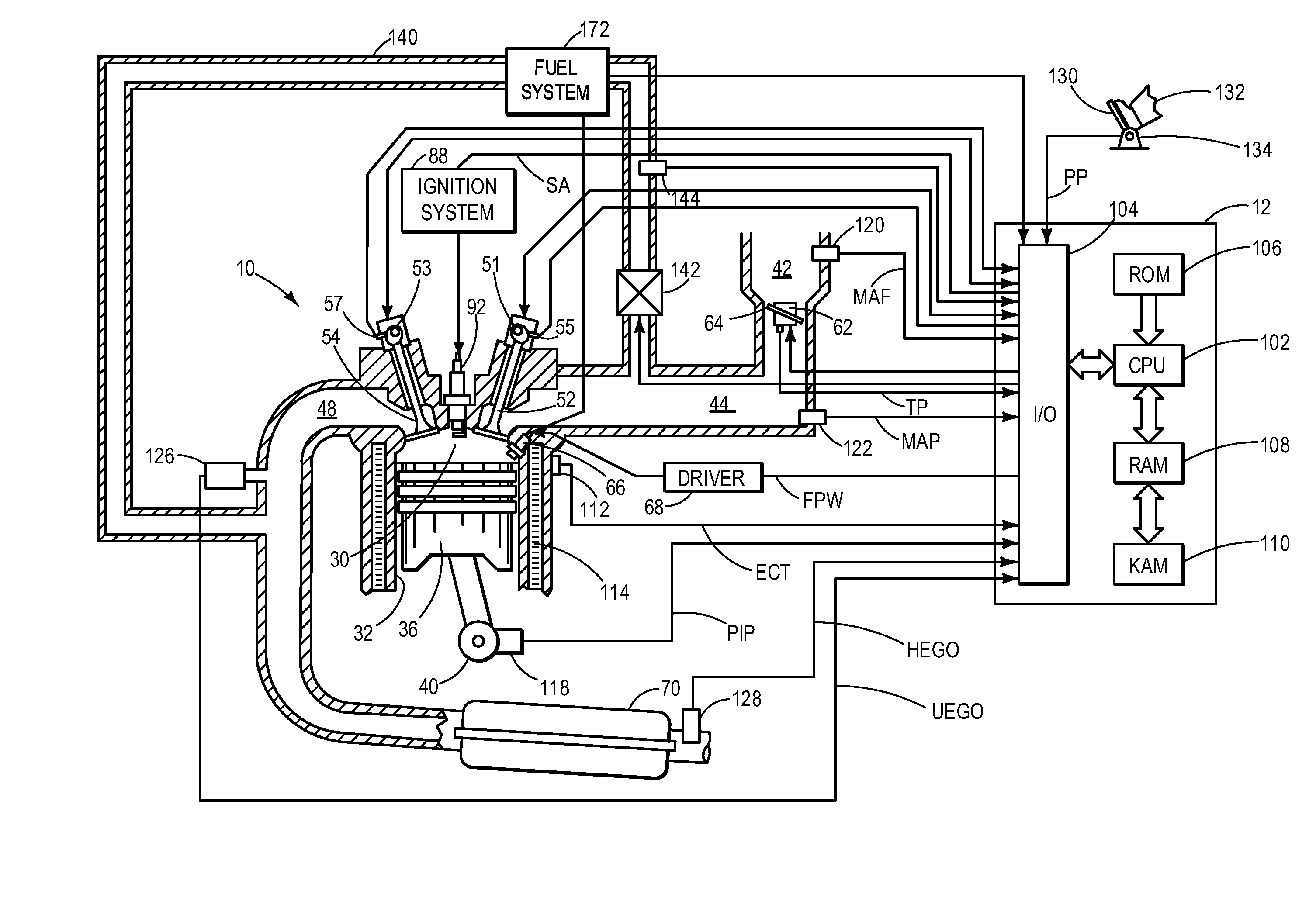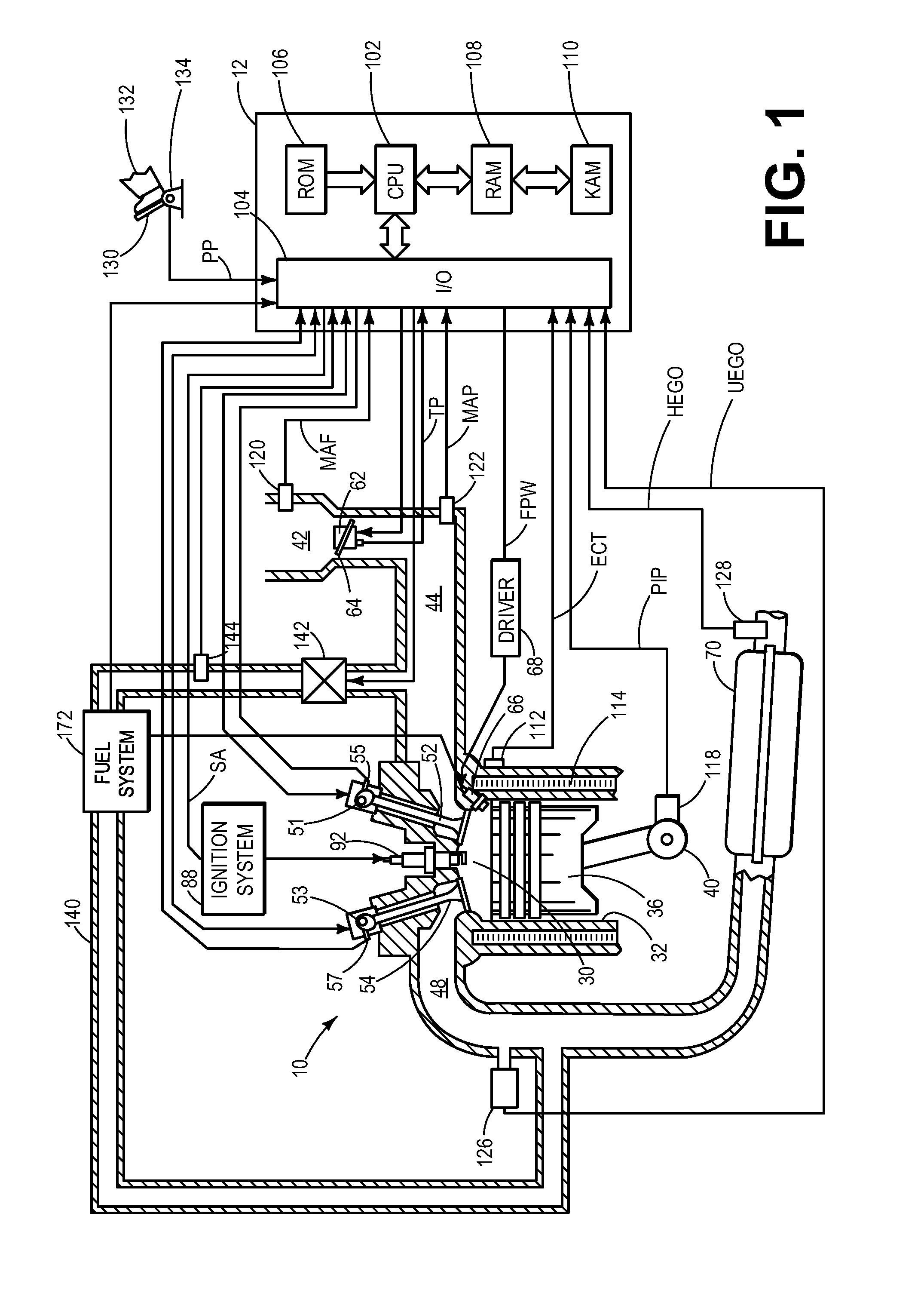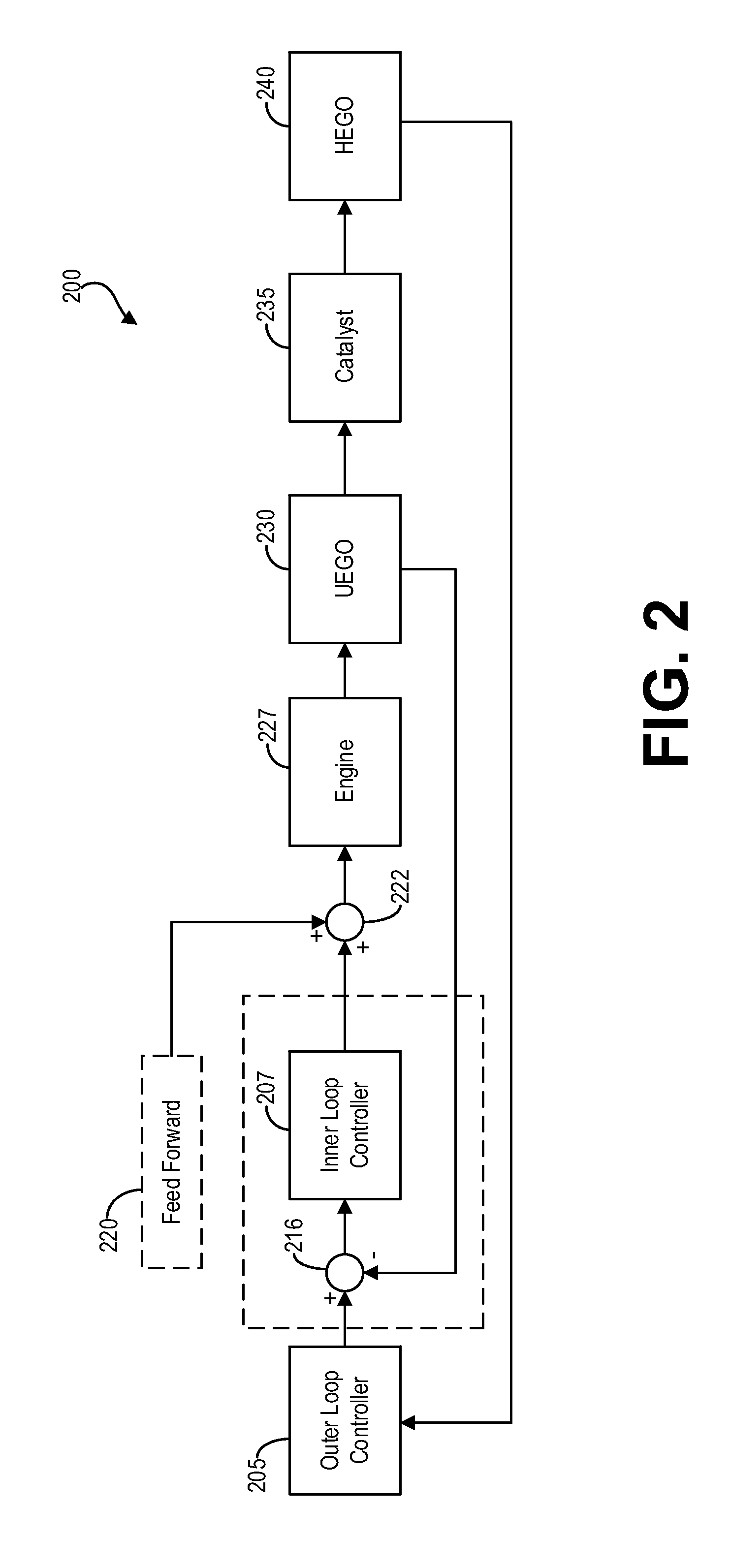Identification and rejection of asymmetric faults
a technology of asymmetric faults and faults, applied in the direction of electrical control, process and machine control, instruments, etc., can solve the problems bias of uego sensor reading rich or lean of stoichiometry, and significant feedgas emissions, so as to maintain drivability and noise, vibration, and harshness (nvh) constraints, the effect of increasing the risk of generating significant tailpipe emissions
- Summary
- Abstract
- Description
- Claims
- Application Information
AI Technical Summary
Benefits of technology
Problems solved by technology
Method used
Image
Examples
Embodiment Construction
[0016]The following description relates to systems and methods for identifying and rejecting asymmetric faults in an exhaust after-treatment system of a vehicle. As shown in FIG. 1, the vehicle may be configured with a three-way catalyst for exhaust after-treatment in addition to exhaust gas oxygen sensors upstream and downstream of the catalyst. These exhaust gas oxygen sensors may comprise a catalyst control architecture including inner and outer control loops, such as the one shown in FIG. 2. A generic mid-ranging control architecture is shown in FIG. 3A and is modified for outer loop control, as shown in FIG. 3B. In the modified approach, the control action of the outer loop is monitored over time in order to identify and reject asymmetric faults. Following a deceleration fuel shutoff event, the catalyst is necessarily biased rich to regenerate the catalyst from a saturated oxygen state. This process of catalyst regeneration will interfere with appropriately monitoring the outer...
PUM
 Login to View More
Login to View More Abstract
Description
Claims
Application Information
 Login to View More
Login to View More - R&D
- Intellectual Property
- Life Sciences
- Materials
- Tech Scout
- Unparalleled Data Quality
- Higher Quality Content
- 60% Fewer Hallucinations
Browse by: Latest US Patents, China's latest patents, Technical Efficacy Thesaurus, Application Domain, Technology Topic, Popular Technical Reports.
© 2025 PatSnap. All rights reserved.Legal|Privacy policy|Modern Slavery Act Transparency Statement|Sitemap|About US| Contact US: help@patsnap.com



